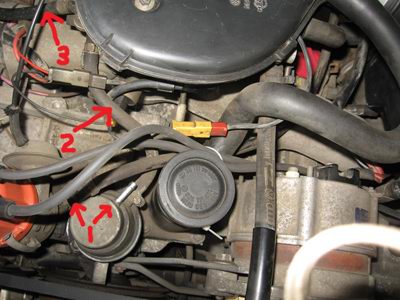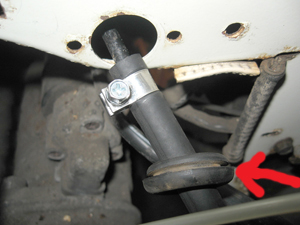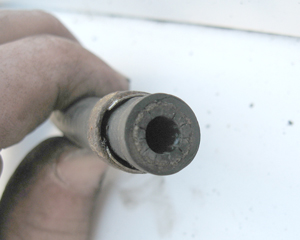Fuel system - 1.9 Fuel hoses
Oldjets: This may have been covered before, but its probably worth repeating for new members.
NB. Please also ensure you read the other Wiki topics on fuel-system safety - especially these two below:
#Fire warnings# - fuel lines, tank and filler
#Fuel leaks# - Aircooled
It is a worthwhile job that could save a breakdown or, worse, your bus or van going up in smoke! It's also a fairly easy job to do yourself, although if you are in any doubt, get a competent mate or garage to double check things after you've finished.
My engine is a 1990 1.9 DG and uses 5.5mm (internal diameter) fuel hose in the engine bay. Earlier engines and fuel injected ones may be different. 5.5mm hose is not always available at motor factors, and the stuff I used was supplied by Volksbolts via their online Ebay shop. Good quality hose and it comes with stainless steel clamps. Quick service too. You may be able to find cheaper, but this is one job where you don't want to skimp on quality. I bought 1.5m which is enough to do the three hoses in the engine bay with enough left to do the short flexible that links the non-return valve to the return hard line, and the two others that link the tank to the filter and the filter to the feed hard fuel line under the van.
NB. Make sure you use proper fuel-hose clips or swaged crimps, NOT small Jubilee hose clips - Very Important!
Photos (below) hopefully show what is what:
First one shows fuel lines in engine bay for the benefit of those who have never lifted the lid before. I'm pretty sure the old ones were original - they are all marked with VW branding, so this may be useful to show how things looked when they left the factory. No. 1 is the fuel pump with the hose that comes through the bulkhead from the feed hard fuel line. Hose is disconnected and lying off to the side. No. 2 is the hose from the pump to the carb. No.3 is the return hose from the carb back out through the bulkhead to the non-return valve.
Next shot shows the other end of the feed hose where it goes through the bulkhead and joins the hard line. Don't forget to put a grommet (arrowed) on it to stop it rubbing on the bulkhead. The return hose is basically the same, but it joins to a small non-return valve just the other side of the bulkhead. There is then another short hose from the valve to the hard line that goes back to the tank. To access these, it is easier to undo the return line from a clip behind the bulkhead, pull it through to fit the new hoses and clip it back up afterwards.
Next photo shows one of the old fuel hoses and why they need to be changed. The outside looks ok, but the inside has perished and cracked - fuel could start leaking through at any time. Any leak will drip on either the starter motor or the exhaust manifolds - you really don't want to think about that...
Make sure you use the type of fuel hose clip that has a smooth band that goes right around the hose and doesn't dig in to it. Some cheap clips can damage the hose. Its good to get the type that have a hexagon headed drive screw too - much less hassle to do them up with a 6mm socket and driver.
If doing these yourself, take your time - the new flexible is a very tight fit on the carb inlet pipes and the plastic hard fuel lines and needs to be carefully pushed on, but with a fair bit of force. You shouldn't lose more than a drop of fuel as you take the old ones off but have some rags handy just in case. Do all clips up tight, then turn engine over briefly to prime system. Turn engine straight off and check for leaks. If all ok, run engine and check again.
Total time taken about an hour, total cost £20. Less fun that calling out the fire brigade but cheaper than a new van!


